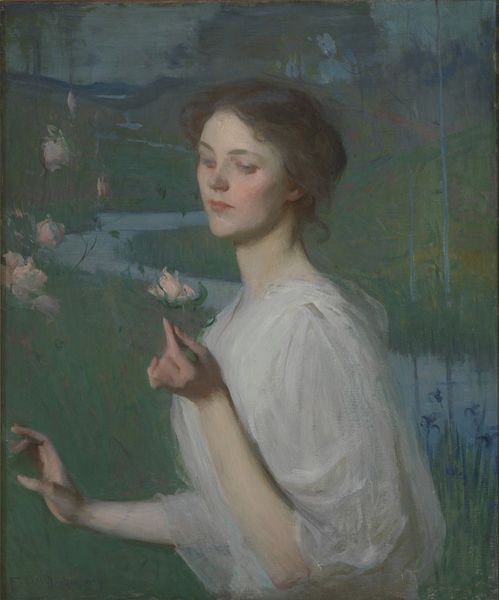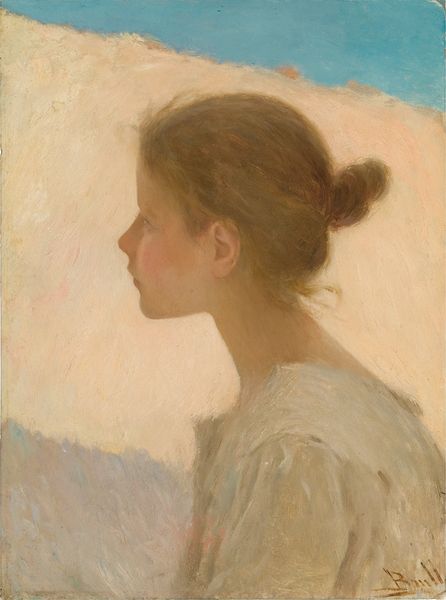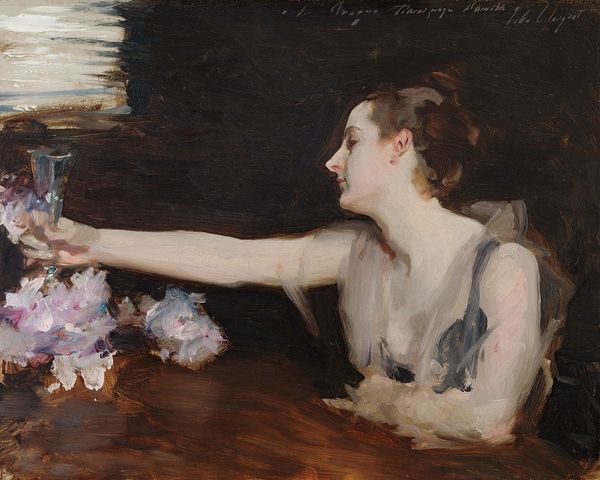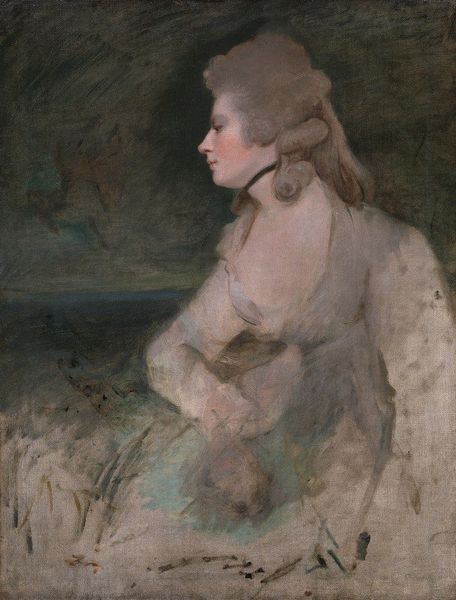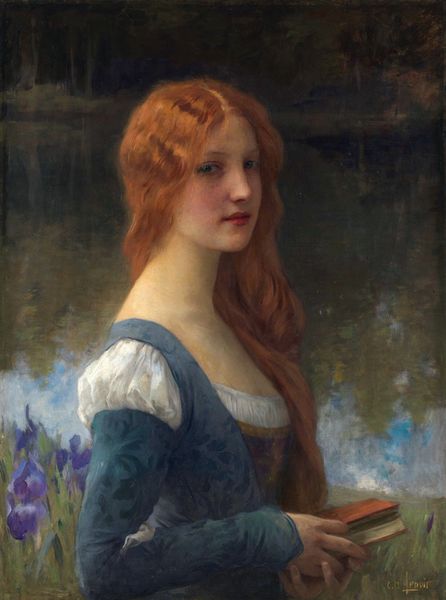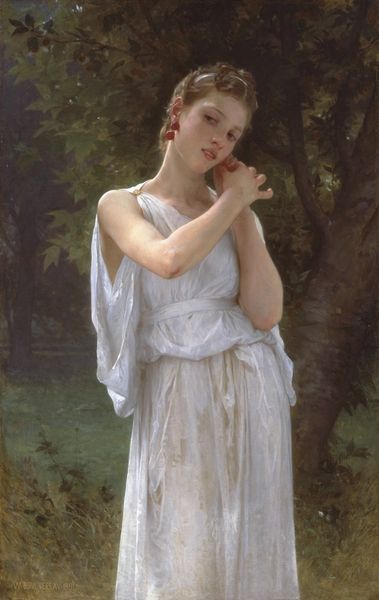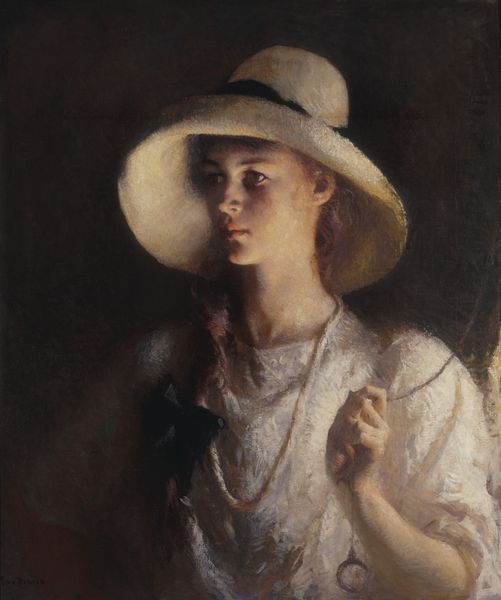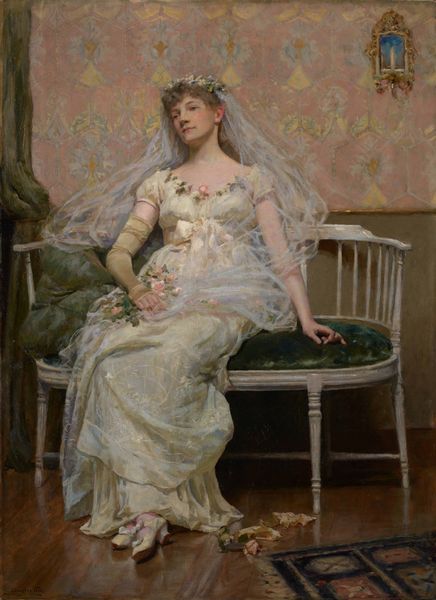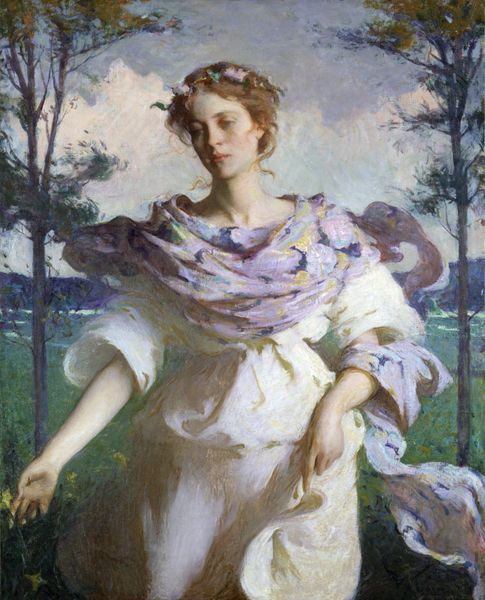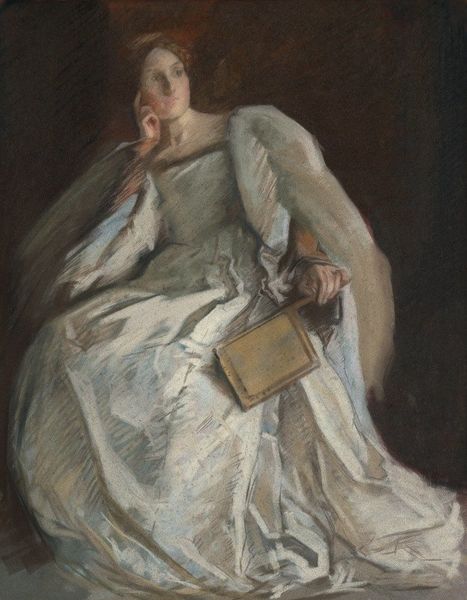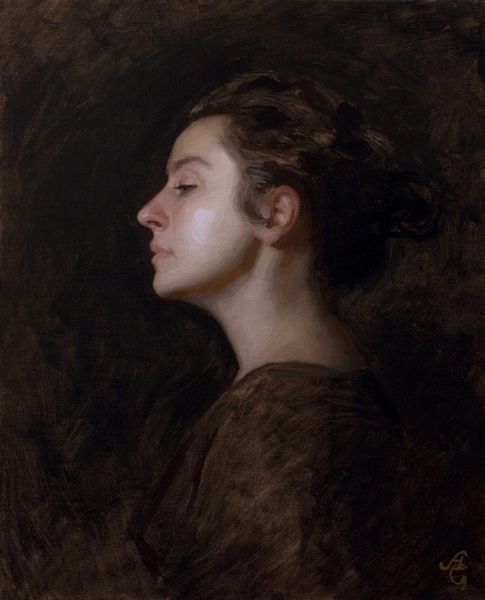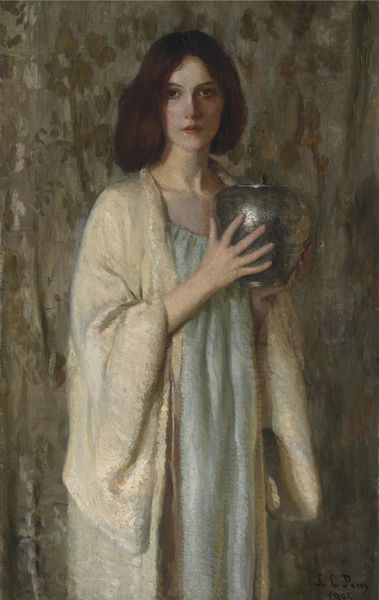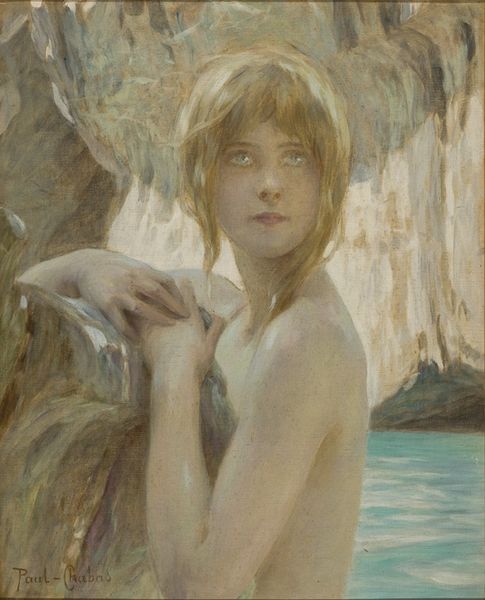
Copyright: Public domain
Curator: Looking at this portrait, I immediately feel a sense of serene melancholy. There's a stillness, almost a resignation, in the subject's gaze and posture. Editor: Indeed. We're observing "Autumn," an oil painting rendered in 1895 by the American Impressionist, Frank W. Benson. Notice how he positions the female figure in the hazy transition between seasons; you get that liminal sense reflected in the symbolic implications of seasonal change, but with an American sensibility. Curator: Absolutely. The swirling white fabric draped around her, almost ghost-like, coupled with her delicate, pale skin, seems to connect her directly to notions of transformation, transience, even purity...there’s a distinct ethereality, isn’t there? Almost angelic in certain interpretations, which tracks within a broader analysis of the period. Editor: It's more complex than pure ethereality, I think. Benson's subject directs her gaze to an indeterminate middle-distance. But notice how he has her fingers poised to subtly interact? She is poised between activity and stillness. Those details aren't accidental, they point toward a visual tension rooted in, perhaps, anxiety over her future position in society. What will she become, is she losing her purity of youth? The river, the seasonal imagery—they reinforce that constant flux of human experience. Curator: That's insightful. I find her detachment from the viewer very potent—the painting's subject is there, but distant, untouchable. This almost aligns with similar themes found in writings on marginalized individuals and what has historically served to ‘other’ their presence in art, suggesting a form of subtle commentary on female visibility and representation during that time. She occupies space, yet remains seemingly inaccessible. Editor: I agree, the work resonates far beyond just surface beauty. As with many Impressionists, light plays a huge part here— it diffuses across her face, softening details, hinting at unseen truths. Also, that somewhat androgynous figure encourages an openness in symbolic representation—in terms of cultural studies it is difficult to pin-point Benson’s intent because she seems like an archetype as opposed to an individual. It creates that distance. Curator: This discussion of "Autumn" enriches my initial appreciation. Recognizing that its beauty rests on deeper social and historical considerations transforms it into a narrative reflecting issues surrounding gender and perception during the turn of the century. Editor: And for me, revisiting Benson's imagery provides deeper symbolic connection and allows one to view it through many different lens of interpretation.
Comments
No comments
Be the first to comment and join the conversation on the ultimate creative platform.
